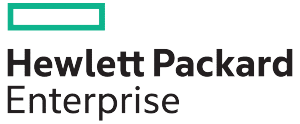This blog post is an excerpt from our recent industry perspective, How Hybrid IT Can Transform Government. Download the full perspective here.
Most government agencies are heading toward a mix of private cloud, virtual private cloud, public cloud and traditional IT resources. Hybrid infrastructure is a potential combination of these four elements across multiple vendors. A key to creating an optimal hybrid infrastructure strategy is to define your right mix of these deployment platforms, specific to your agency’s needs.
Managed private cloud is ideal for mission-critical workloads that have specific security or compliance requirements or that require specific hardware to meet performance expectations while existing in any one of these models: government-owned, contractor-operated; government-owned and -operated; contractor-owned and -operated. A multitenant variation of managed private cloud is Managed Virtual Private Cloud (VPC), a cloud in a managed environment that can scale quickly to meet agency requirements. Public cloud is ideal for cloud-native applications that have large variances in demand with a lessened emphasis on security. Traditional IT is best for supporting legacy applications that are not economically or technically feasible or too policy-constrained to move to a cloud service platform.
Hybrid cloud combines the distinct capabilities of private and public clouds. Enterprise IT can balance flexibility and control while laying an architectural foundation that quickly scales services, speeds application development and reduces IT costs.
Many public-sector agencies are moving workloads to the hybrid cloud to cut costs and change cloud computing from a capital expense to an operating expense, where services can be purchased as needed.
But the fact is that many government agencies move their workloads without first thinking about which platform is best for their applications. Although this seems like a natural first step, resource challenges combined with the White House “Cloud First” mandate often force and possibly incentivize government agencies to skip this critical beginning.
But if you don’t pick the right cloud platform for the right workload, your agency could end up just migrating the application again after the fact, costing extra time, money and effort.
“Asking a single provider to adapt their offering to a workload that is not a good fit for their service drives additional cost and risk into the solution,” Don Hewatt, the Hewlett Packard Enterprise U.S. Public Sector Workload and Cloud Practice leader, said. “Leveraging a hybrid approach where the workload has been assessed and the right platform has been determined can provide a high-performing and cost-effective solution that satisfies the needs of the entire consumer base.”
To achieve the flexibility that businesses require, IT departments need to deploy a hybrid infrastructure with both multi-cloud and non-cloud architectures. HPE calls this the “Right Mix.”
The Right Mix optimizes performance, security, compliance and cost by enabling fast, convenient access to IT services within a complex, multi-cloud environment; the delivery of secure, compliant services in a private cloud; and easy access to traditional IT for legacy applications.
Here’s how it works:
Define your workload
No two agencies are the same, and no two workloads have the same characteristics. Requirements for delivery, performance, scalability and security vary significantly, but each must be considered to meet business service-level agreements and ensure compliance with ever-evolving regulations. When deciding which cloud platforms are most compatible for each government agency, workload is the main driver IT professionals should consider. CIOs and contracting officers must take a personalized approach to their specific agency needs. Just as workloads can vary broadly in their requirements so too can cloud platforms vary in their ability to meet those requirements.
Power your workload
To achieve the flexibility that the public sector requires, IT departments must deploy the right hybrid infrastructure to power their IT services. HPE can help because it has a broad portfolio of products and services that offer the fastest path to a hybrid infrastructure with optimized performance, security and cost — including support for third-party hardware — and a complete portfolio of managed services if you want to avoid the hassle of managing the environment yourself. This enables you to offer the Right Mix of public cloud, private cloud and traditional IT capabilities to meet performance, scalability, and security and data residency requirements, all within a single management environment.
Optimize your workload
With HPE services, you can become an agile internal service provider. It provides the tools you need to optimize your hybrid infrastructure with assured performance, security and compliance. The hybrid infrastructure management tools offer self-service access with multiple service catalogs and template service designs to administer and optimize resources across a hybrid infrastructure. They allow you to maximize use, reduce costs and ensure the agility you need to meet the demands of internal and external services.
By examining your workloads with this “Right Mix” approach, you’ll make sure that you have the right cloud solutions from the get-go. An optimized solution of private cloud, public cloud and traditional IT maximizes IT spending and speeds innovation to transform your agency into an agile, on-demand, hybrid service provider. It enables you to deliver the flexibility, innovation and cost structure your organization needs to grow and thrive in the dynamic environment that the public sector faces today.






[…] year, hybrid IT was the new black, at least according to the SolarWinds 2016 Public Sector IT Trends Report. In […]